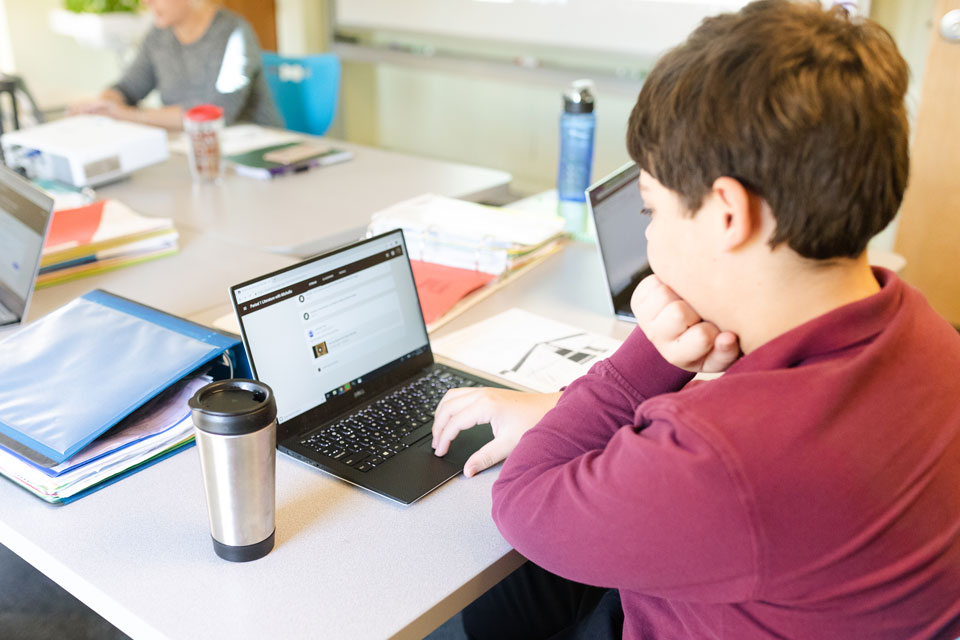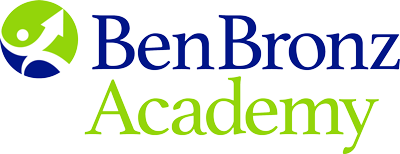Lower School Curriculum
At Ben Bronz Academy we know our students require much more than content knowledge. For elementary school age children, we focus on basic skills, cognition, and language development. Knowledge of content is important but secondary. Content is the vehicle through which the skills are introduced and practiced, and through which cognitive concepts are developed and discussed. We teach to the State’s core curriculum standards but we also focus on teaching students how to think and learn more effectively in and out of the classroom. The medium for discussion and expansion of awareness is the students’ oral language.
Students practice basic skills several times per day in short sessions, in which the students are made aware of the purpose of the skill, set themselves targets, and measure their own progress toward achieving the targets. These sessions include, spelling, handwriting, written and oral expression, arithmetic, typing, and reading for fluency.
Students Become More Receptive To Intellectual Stimulation
Both cognitive development and oral language are stimulated through our MetaLearning Program (MLP — see below) and the incorporation of mediated learning into all lessons. The mediator (teacher) consciously strives to build the student’s thinking structures through selecting and organizing the classroom stimuli in such a way that the learner can gain his own insights into the processes he is using to learn. Through the MLP, the student becomes more receptive and sensitive to internal and external sources of intellectual stimulation. The mediator carefully includes aspects from both the cognitive domain and the language domain in each lesson plan.
Concepts First Presented Via Concrete Material
The mediator also gives attention to the modality in which concepts are presented. Whenever possible, the Academy mediator first presents concepts through interaction with concrete materials. This elicits a natural hierarchy of language development (listening, speaking, reading, writing). This process forces students to use their inherent ability to learn by first doing. Once the concepts are established, each student is moved to figural and abstract usages (paper and pencil tasks, or discussions about the concepts without the concrete materials at hand). Having learned first by doing, the student is now able to handle figural and abstract usages because he has built the necessary language and conceptual frameworks for understanding.
A Classroom Example
In their reading class, three elementary students construct short sentences on computers. They then move to a table where each student has a group of six note cards. Each card has a single word on it. The task is to rearrange the cards to form a sentence. The students then move to the white board to write the sentence they created. The mediator moves among the students praising good work and answering questions in a way that encourages the students to draw on their own knowledge and thinking. (See the Answering Questions box.)
MetaLearning Is The Centerpiece
The MetaLearning Program (MLP) is the centerpiece that sets the stage for cognitive awareness in all of the school’s academic areas. The oral language component of our program is next in importance since it serves as the starting point for creating lessons in all content areas. Oral language skills are formally built into the Academy’s language arts, social studies, and science curriculums and further practiced in math, physical education, and other areas.

Answering Questions With Questions To Stimulate Thinking
Academy Student: “What is this word?”
Mediator: “What’s the first letter in that word?”
Academy Student: “T.”
Mediator: “Good! What sound does the letter T make?”
Academy Student: “Tah.”
Mediator: “Right! What’s the next letter?”
Academy Student: “O”
Mediator: “And the letter “O” sounds like what?”
Academy Student: “Sometimes it’s ‘ew.’”
Mediator: So put the sound of t together with the sound of o and what do you get?”
Academy Student: “To?”
Mediator: “You’ve got it. T followed by O often sounds like ‘to’”
Note that the Mediator never answers the student’s question. Instead the student uses learned skills to answer it himself.
Connecting Learning To Life
At Ben Bronz Academy, Middle and Upper School students take courses in Instrumental Enrichment, a world-renowned thinking skills and cognitive development program.
Developed by Dr. Reuven Feuerstein, Instrumental Enrichment enables a direct and focused attack on mental processes that, through their absence, their fragility, or their inefficiency, are to blame for poor intellectual or academic performance. The instructional material consists of paper-and-pencil tasks divided into 14 instruments. The instruments present situations in which problem solving strategies must be developed and continually refined by learners. Besides directing students’ efforts toward examination and awareness of their problem solving behavior, the mediator is careful to help students see how this new learning can be applied in other situations (generalized), both in the classroom and in daily life. Feuerstein calls the activity “bridging.”
The Six Major Goals of Instrumental Enrichment
- To correct weaknesses and deficiencies in cognitive functions
- To help students learn and apply the basic concepts, labels, vocabulary, and operations essential to effective thought
- To produce sensible and spontaneous thinking habits leading to greater curiosity, self-confidence, and motivation
- To produce in students increasingly reflective and insightful thought processes
- To motivate students toward task-oriented abstract goals rather than toward objectives of impulsive self-gratification
- To transform poor learners from passive recipients and reproducers of information into active generators of new information
Through the Academy’s Mediated Learning, students acquire problem-solving strategies by tackling challenging problems in a systematic way. They learn to discuss every step in their thought process. This develops their language and deepens their understanding of the world around them.
Click here for a more in depth explanation of The Mediated Learning Experience.
